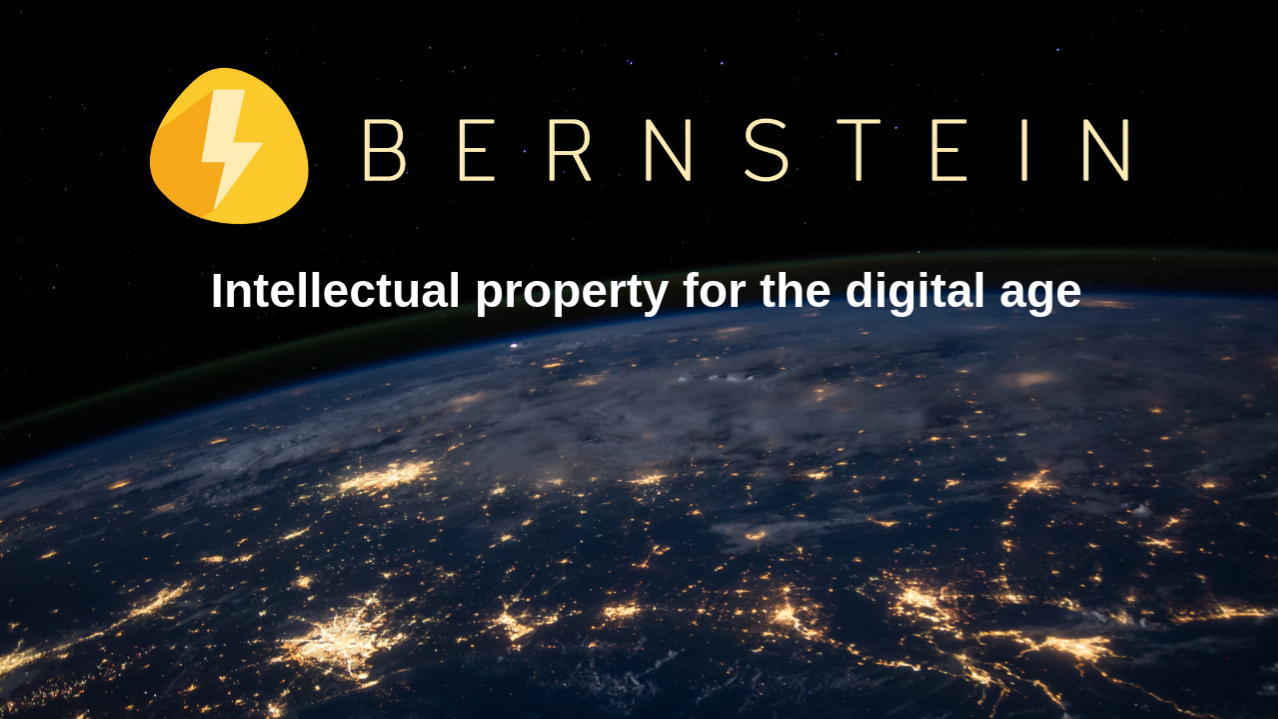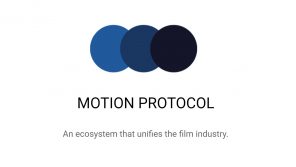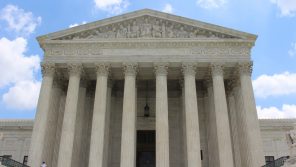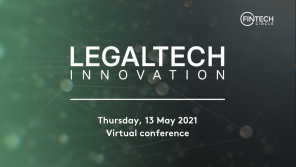A blockchain is a growing list of records, called blocks, which are linked using cryptography. This technology became first famous through the success of Bitcoin, which was the first product to operate on a blockchain. Simply put, a blockchain is a distributed ledger. The special thing is, due to the design, a blockchain is resistant to modification of the data. Once recorded, the data in any given block can not be altered retroactively without the consensus of the network majority.
Bernstein Technologies GmbH in Munich, Germany, uses the blockchain technology now to allow innovators to secure and manage intellectual property assets. Marco Barulli is the Co-Founder and Managing Director, originally from Italy, he has a long track record of founding and running companies, which dealt with Bitcoin, blockchain, and cryptography.
Nico Kuhlmann: What has blockchain to do with intellectual property (IP)? How can the use of blockchain improve the management of intellectual property assets?
Marco Barulli: Let’s start with the good news: Humankind is innovating faster than ever. And we can see this reflected in the market as well. 87 % of the SP500 value now lies in intangible assets. That’s a stunning 20 trillion US dollars of pure intellectual property!
On the other hand, this massive amount of IP is still managed in slow, geographically fragmented and expensive ways. The current IP right system is in my opinion certainly struggling to keep up with the speed of the digital world, and most innovators are not getting much out of it. The reality of things is that innovative companies do not manage IP only when applying for a patent or when renewing a trademark. They do so on a daily basis! When entering a partnership, or hiring a new member of the research and development team, or licensing their technology. All these activities involve IP assets, and may potentially expose the company to significant risks coming from multiple directions, from unloyal employees to patent trolls. And these risks can create great damages: Legal costs, delays in product development, and even put the company out of business.
In this scenario public blockchains represent a great alternative. At their core, public blockchains are a new common good, just like meadows and water. Actually better: Since they represent both the actual commonly available resource – like water – and the infrastructure – the pipeline – to distribute it. More specifically, the good represented by blockchain is a radically new form of public registry, in the sense that it is independent from any central authority and control. Everyone can have access to an updated copy of this registry, everyone may add something to this registry, but no one will be able to make changes or delete anything. And this universal global registry is a perfect tool for creating an indisputable trail of records of all innovation processes.
Companies will be able to secure and manage their IP assets with unprecedented speed and flexibility, achieving effective IP protection at low effort and low cost. Thanks to the blockchain, companies can create solid foundations to neutralize IP management risks and secure the whole innovation lifecycle, from securing trade secrets to defensive publishing. And this is literally our mission at Bernstein.
Nico Kuhlmann: How exactly does this work? What is stored by whom on which blockchain?
Marco Barulli: Bernstein is a simple web application where all the information are organized in projects. Projects are very flexible. They can be used to prove the evolution over the years of a large research and development project, or just to keep track of a few files quickly shared with an external partner. Whatever the case, users may, at any time, request to certify the project data.
This request will trigger the creation of a blockchain transaction that will move a tiny amount of Bitcoins to a specially crafted MultiSig Bitcoin address built combining the private key of the user – that is the owner of the IP assets – with the cryptographic fingerprint of the project data. This Bitcoin transaction becomes a certificate capable of proving existence, integrity and ownership of all the files and metadata included in the project.
If, at a later stage, data in the project are changed, for example new results from the lab, new proofs of use or improved design, the user will be able to request a new certificate. Consequently, a new transaction will move those same Bitcoins from the Bitcoin address associated to the previous version of the project to a fresh Bitcoin address reflecting the updated data. This iterative registration process will create an immutable trail of linked certificates able to testify the evolution over time of the knowledge contained in that project.
Of course, these Bitcoin transactions will not store any file or any clear-text data, but just a reference to the cryptographic fingerprint of the project data, generated using hash functions. This is the beauty of blockchain certificates. They are easy to create, usable with any file format, independently verifiable by any third party and there is no central authority required.
However, in order to validate a digital certificate, no matter if based on a decentralized infrastructure like the blockchain, or issued by a central authority, the actual original files used to generate the certificates are needed, not a single bit changed. Unfortunately, maintaining a versioned repository of all registered IP assets is quite challenging for any company. For this reason, Bernstein also offers unlimited encrypted storage to its clients and, right after the registration on the blockchain, the whole project version is stored either in the cloud or in decentralized file systems, such us the InterPlanetary File System (IPFS).
Nico Kuhlmann: Are you already open for business or still in a private beta phase? And can you tell us an actual example of a client and how he is using Bernstein?
Marco Barulli: We have been running Bernstein in “private beta” for over a year, and gradually acquired tens of clients, mostly high-tech companies and law firms. Bernstein “private beta” phase is eventually over, and now Bernstein’s certification solutions are available to the public.
The most enthusiast client we have is P&TS, a Swiss patent law firm. They have been offering Bernstein certifications to their clients since 2017, proactively spotting situations where blockchain certificates could minimize risks or become the foundation for a stronger contractual framework.
We love to work with law firms, we have learned so much from them. Thanks to their inputs, we became familiar with many situations where Bernstein can provide substantial benefits, from proving prior use and prior knowledge against patent trolls, to agile IP management in the fashion and design industry, from producing better NDAs and contracts, to demonstrating reputation for trademarks or making copyright claims.
Nico Kuhlmann: Which is the current legal status of blockchain certificates around the world? Are they globally accepted in courts or are they somehow affected by local law?
Marco Barulli: In principle, a blockchain and its content can be used as evidence in court just as much as any other database or ledger. In the last years, many countries are explicitly making blockchain records legally admissible. Legislators are moving fast since they need to provide legal support to the increasing number of government initiatives that involve the use of some kind of blockchain technology.
In my opinion, China is clearly leading the way in this space, with the recent Supreme Court decision and the ruling by the Hangzhou Internet Court, where Bitcoin certificates have been decisive in copyright infringement cases. In the US, several states are updating laws so that smart contracts, signatures and public data recorded via blockchain technology will be legally recognized and valid.
But there is progress in Europe, too. In the European Union (EU), the regulation on electronic identification and trust services for electronic transactions in the internal market – or eIDAS Regulation for short – states for example expressly that an electronic document cannot be denied legal effect and admissibility as evidence in legal proceedings solely on the grounds that it does not meet the official requirements of a qualified electronic timestamp. In Germany, a blockchain certificate would probably be considered as evidence taken by visual inspection according to Section 371 of the German Code of Civil Procedure. But there have not been any decisions on this as far as I know. Maybe we will be the first to bring this legal question to a court in Germany.
Nico Kuhlmann: Why did Bernstein decide to build its services on the Bitcoin blockchain? Are you planning to support other blockchains as well?
Marco Barulli: Any public blockchain, that is any decentralized, permissionless, uncensorable and resilient blockchain could be leveraged as a public registry for IP assets. Bernstein implementation is currently based on the Bitcoin blockchain because of its proven robustness and security. However Bernstein is designed to be blockchain-agnostic and we’re ready to deploy our registration protocol to other public blockchains as soon as we perceive their additional benefits for our users.
Nico Kuhlmann: Why should innovators trust Bernstein with their IP assets? How did you manage to overcome the traditional usability challenges of crypto-based products?
Marco Barulli: Users don’t have to trust Bernstein with their IP assets. In fact, they don’t need to! Bernstein is a “zero-knowledge web application”. This means that all data are locally encrypted in the user browser before reaching Bernstein server. Therefore Bernstein users are not leaking any knowledge to any third party, including Bernstein itself. Bernstein is just acting as a gateway to multiple certification infrastructures, both decentralized like the Bitcoin blockchain, or centralized like the timestamping authorities in the EU and China.
To the user, Bernstein looks like any other regular web application. Nothing to install, no crypto keys to generate, no need to worry about storage and backups. No Bitcoin wallet or other cryptocurrencies are required. Ultimately, you can think of Bernstein as an encrypted Dropbox combined with a certification layer. Simply drag-and-drop your files and click to get your IP assets certified on multiple blockchains, and timestamped by multiple authorities (TSA).
Nico Kuhlmann: Let’s talk numbers. What is your business model? How does Bernstein makes money?
Marco Barulli: If you are an innovative company, you can simply purchase one of our flat-rate subscription plans. Each plan includes a predefined amount of certificates, starting at 10 per month per just 99 euro/month. All plans allow to create both blockchain certificates and TSA timestamps. And they all come with unlimited, encrypted storage of certified data. We also offer a lifetime plan, tailored for individuals or very small companies.
If you are a law firm active in the IP sector, then Bernstein is a great opportunity to expand your service portfolio and grow your business. Our law firms clients can set up their own co-branded instance of Bernstein and conveniently introduce their clients to the benefits of blockchain certifications, while keeping them within the familiar and trusted context of the law firm name. The co-branded version of Bernstein is offered for a small monthly fee, combined with volume-based pricing based on the actual number of generated certificates. Therefore, the upfront investment is minimal for a law firm. At Bernstein, we firmly believe this trend is a huge opportunity for law firms who recognize this new paradigm and start offering their clients services that defend their IP assets by using those same cutting-edge digital technologies.
Nico Kuhlmann: How do you keep the lights on at the moment? Do you have any investors yet?
Marco Barulli: Besides revenues from the pool of clients we are currently serving, in 2018, Bernstein finalized a seed round with Motu Ventures, a Berlin early-stage fund, and some of the partners of a leading Düsseldorf IP law firm. We are now working on the next financing round. Therefore, we are happy to talk to reputable investors with a strong passion for the legal tech segment.
Nico Kuhlmann: Which are your expectations of blockchain and the management of intellectual property in the years to come? What will happen and what won’t?
Marco Barulli: For sure I am expecting more official confirmations of the legal validity of blockchain records. This will be an obvious consequence of the growing adoption of blockchain certificates both in the intellectual property space and in other fields. This will increase the chances of having courts around the world engaged in proceedings based on blockchain evidence and this will therefore attract the attention of legislators.
From a more technical point of view, I hope 2019 will bring us more mature technologies for non-fungible tokens both on Ethereum and Bitcoin. Advancements in this space may be very relevant to move from the current phase, where blockchain certificates are mostly used to prove the user rights over IP assets, to a phase where those assets may be transferred, sold and licensed directly on the blockchain.
Nico Kuhlmann: Thanks, Marco, for taking the time. Good luck for your projects!




